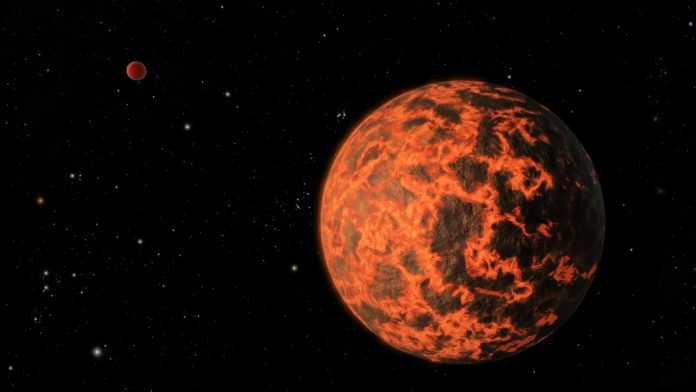Researchers have found the first planet with its core exposed.
The discovery represents the first time that researchers have been able to look into the inside of a planet, potentially offering an unprecedented understanding of how such worlds are formed.
The core is believed to be a gas giant that was either stripped of its gaseous atmosphere or that failed to form one in its early life.
The core, as the same size as Neptune in our solar system, has mass 2-3 times higher than Neptune, but it is also incredibly dense, with all the material that makes up that mass squashed into an object the same size.
TOI 849 b lies around a star, much like our own approximately 730 light-years away. It orbits so close to its host star that a year is a mere 18 hours, and its surface temperature is around 1800K.
Astronomers discovered TOI 849 b- located in Neptunian Dessert- in a survey of stars by NASA’s Transiting Exoplanet Survey Satellite (TESS) using a transit method. Neptunian Dessert is a region close to stars where we rarely see planets of Neptune’s mass or larger.
The transit signal was confirmed and refined using observations with ten telescopes of the Warwick-led Next-Generation Transit Survey (NGTS), based at the European Southern Observatory’s Paranal Observatory in Chile.
The object was then analyzed using the HARPS instrument, on a program led by the University of Warwick, at the European Southern Observatory’s La Silla Observatory in Chile. This utilizes the Doppler effect to measure the mass of exoplanets by measuring their ‘wobble’ – small movements towards and away from us that register as tiny shifts in the star’s spectrum of light.
Lead author Dr. David Armstrong from the University of Warwick Department of Physics said: “While this is an unusually massive planet, it’s a long way from the most massive we know. But it is the most massive we know for its size, and extremely dense for something the size of Neptune, which tells us this planet has a unique history. The fact that it’s in a strange location for its mass also helps – we don’t see planets with this mass at these short orbital periods.”
“TOI 849 b is the most massive terrestrial planet – that has an earth-like density – discovered. We would expect a planet this massive to have accreted large quantities of hydrogen and helium when it formed, growing into something similar to Jupiter. The fact that we don’t see those gases lets us know this is an exposed planetary core.
“This is the first time that we’ve discovered an intact exposed core of a gas giant around a star.”
Dr. Armstrong adds: “One way or another, TOI 849 b either used to be a gas giant or is a ‘failed’ gas giant.
“It’s a first, telling us that planets like this exist and can be found. We have the opportunity to look at the core of a planet in a way that we can’t do in our solar system. There are still big open questions about the nature of Jupiter’s core, for example, such strange and unusual exoplanets like this give us a window into planet formation that we have no other way to explore.”
“Although we don’t have any information on its chemical composition yet, we can follow it up with other telescopes. Because TOI 849 b is so close to the star, any remaining atmosphere around the planet has to be constantly replenished from the core. So if we can measure that atmosphere, then we can get an insight into the composition of the core itself.”





























